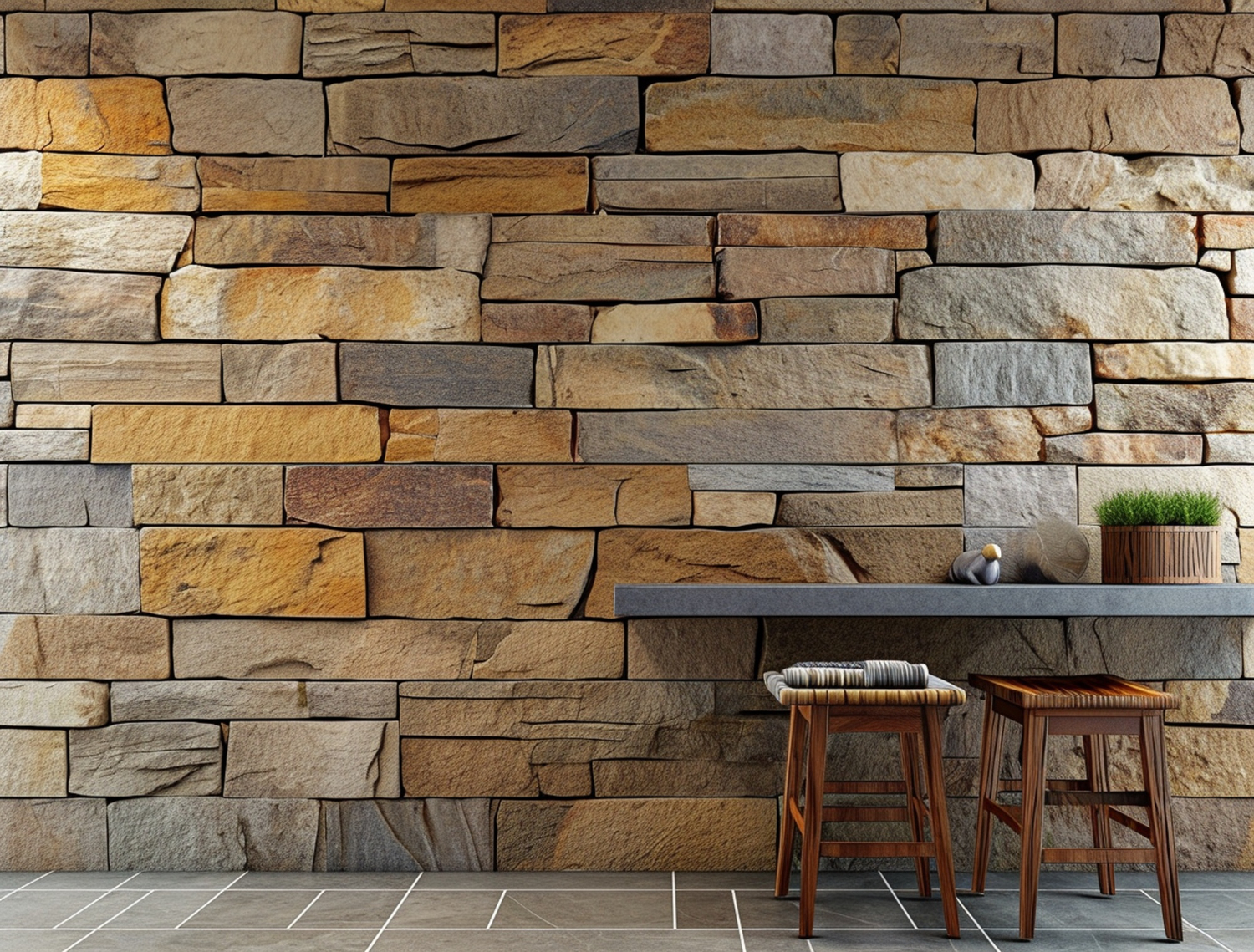
Wall cladding has become an essential element in the design of commercial spaces. It not only increases the beautiful appearance of interiors but also offers practical benefits such as insulation, durability, and ease of maintenance.
In this article, we will explore the various applications and advantages of walls in commercial settings, focusing on how office wall cladding, brick wall cladding, and modern wall interior designs can transform your business environment.
By understanding the different types of wall cladding and their specific uses, you can make informed decisions that elevate the look and functionality of your commercial space.
Wall cladding is more than just a decorative element; it serves multiple functional purposes. One of the primary benefits of a wall is its ability to improve insulation, which can help regulate the temperature within a commercial space, reducing energy costs. Additionally, these materials are typically durable and easy to maintain, making them ideal for high-traffic areas such as offices, retail stores, and restaurants.
Another significant advantage of the wall is its ability to create a professional and compatible look. Whether you choose for sleek, modern panels or traditional cladding, the right choice can significantly upgrade the visual charm of your commercial space. It can also be customized to reflect your brand's identity, creating a unique and memorable environment for clients and employees alike.
Office wall cladding is a popular choice for businesses looking to create a modern, stylish, and functional workspace. There are various materials available for cladding for walls, including wood, metal, and composite panels. Each material offers distinct advantages and can be tailored to suit different design preferences and requirements.
Wooden cladding is an excellent option for creating a warm and inviting atmosphere in an office. It can be used to feature specific areas, such as conference rooms or reception areas, adding a touch of elegance and refinement. Metal cladding, on the other hand, is perfect for achieving a modern, industrial look. It is highly durable and can withstand the wear and tear of a busy office environment.
Composite panels offer a variable and cost-effective solution for office wall cladding. These panels can mimic the appearance of natural materials, such as wood or stone, while providing the benefits of easy maintenance and installation. With a wide range of colors and finishes available, composite panels can be customized to match your brand's look and create a compatible look throughout your office.
Brick wall cladding is a timeless choice that adds character and charm to commercials. It is particularly popular in retail environments, restaurants, and cafes, where it can create a rustic, cozy atmosphere. It is available in various styles, including traditional red brick, white-washed brick, and even faux brick panels, allowing for a range of design possibilities.
One of the main advantages of this is its durability. Brick is a rough material that can withstand heavy use and is resistant to damage, making it ideal for commercial settings. Additionally, it provides excellent thermal insulation, helping to maintain a comfortable temperature inside the building.
When using brick cladding, it is essential to consider the overall design and layout of the space. Brick can be used to create modulation walls, highlight architectural features, or cover entire walls for a dramatic effect. Combining brick with other materials, such as wood or metal, can also add visual interest and create a unique, dynamic look.
Modern wall interior designs for commercial focus on creating sleek, stylish, and functional environments. Cladding plays a crucial role in achieving this by providing a variable canvas for various design elements. From geometric patterns to textured surfaces, modern cladding options are designed to make a statement and increase the overall look of the space.
Textured cladding is a popular choice for adding depth and dimension to commercial interiors. Materials such as 3D panels, wave panels, and textured tiles can create stunning visual effects and serve as focus in the design. These textures can be used to break up large, flat surfaces and add interest to otherwise plain walls.
Another trend in modern interior designs is the use of sustainable and eco-friendly materials. Recycled wood, reclaimed metal, and natural stone are increasingly being used for cladding, providing a stylish and environmentally conscious option for businesses. These materials not only look great but also contribute to a healthier indoor environment.
It is widely used in retail and hospitality settings to create inviting and memorable spaces. In retail environments, it can be used to highlight product displays, create a compatible brand experience, and guide customers through the store. Materials such as wood, metal, and stone can be combined to create a dynamic and engaging shopping environment.
In the hospitality industry, it is used to create luxurious and comfortable spaces for guests. Hotels, restaurants, and cafes often use them to upgrade the vibrations and create a unique atmosphere. For example, a hotel lobby might feature elegant stone cladding, while a restaurant might use rustic wood panels to create a cozy dining area.
One of the greatest advantages of cladding is its creativity. It can be customized to suit the specific needs and elegance preferences of your business. Whether you want to create a modern, industrial look or a warm, traditional atmosphere, there is a cladding option to match your vision.
Customizing them involves selecting the right materials, colors, and finishes to reflect your brand's identity. It also includes considering the layout and design of the space to ensure that the cladding increases the overall beauty and functionality. Working with a professional designer or contractor can help you achieve the desired look and ensure that the installation is done correctly.
It is an essential element in the design of commercials, offering both beauty and practical benefits. Whether you choose office wall cladding, brick wall cladding, or modern wall interior designs, it can transform your business environment, creating a professional and inviting space. By understanding the different types of cladding and their specific applications, you can make informed decisions that increase the look and functionality of your commercial space.
1. What are the benefits of wall cladding in commercials?
It increse the beautiful appearance, provides insulation, increases durability, and requires low maintenance, making it ideal for commercial environments.
2. How do I choose the right cladding material for my office?
Consider the overall design attractive, durability, maintenance requirements, and budget. Materials like wood, metal, and composite panels offer different benefits and can be tailored to suit your office’s style.
3. Can brick wall cladding be used in modern commercial designs?
Yes, it can be incorporated into modern designs by choosing the right style, such as white-washed or faux brick panels, and combining it with other materials for a modern look.
4. What are the latest trends in cladding for commercials?
Current trends include textured cladding, sustainable materials, and innovative designs like 3D panels and geometric patterns that add depth and visual interest to interiors.
5. How do I maintain wall modern cladding in a commercial setting?
Maintenance varies by material. Regular cleaning with appropriate products and periodic inspections for damage are essential. Durable materials like brick and metal require less upkeep compared to others.












